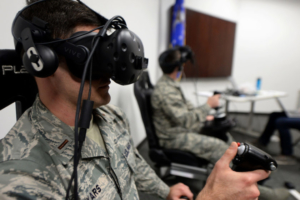
Air Force Is Looking For Gamers
Game controllers at the ready. Signal Sonic to be on standby: the U.S. Air Force is looking at gamers as their future airmen.
The Air Force is currently and has been facing a shortage of qualified pilots.This has the service branch working with contractors on a series of video games it hopes to put online later this summer. The games will be able to track the abilities of players, and contact those who show the right attributes to perhaps, one day, be fighter pilots.
By developing the online game aimed at high school gamers, the Air Force can identify potential airmen, according to Lt. Gen. Steven Kwast, head of Air Education and Training Command. The game will be able to identify conceptual, constructive, contextual, creative, critical, and collaborative thinking.
The idea is reminiscent of movies like “The Last Starfighter” and “Ender’s Game” where young people who score well on flight simulator video games are recruited to fly spaceships.
Because they are playing anonymously and only identified by an IP address, the player’s privacy is protected.
Data to create the game has been coming from the service’s pilot training next initiative, which explores how pilots can learn and train faster. This encompasses existing and emerging technologies including virtual reality simulation and artificial intelligence to get airmen in an aircraft faster, with the potential of expanding the streamlined training.
But there are those that argue that video gamers’ psychology might be better-suited to flying drones. Gamers have a unique set of skills. They excel at interpreting their screens for visual clues about their environment, and have a lot of patience. For gamers, it’s really no big deal to sit in front of their screens for hours on end, paying attention to what’s going on, and intervening only if needed.
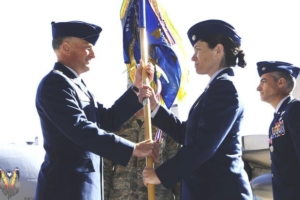
Meet the First Female Air Force Air Commando General
Breaking another gender barrier, Col. Brenda Cartier will soon become the Air Force Special Operations Command’s (AFSOC) first female air commando brigadier general, according to Lt. Gen. Brad Webb, commander of AFSOC.
Col. Cartier was the first female to command an Air Force Special Operations Command flying squadron when she took command of the 4th Special Operations Squadron Ghostriders in 2009. That designation came just 16 years after the Air Force first allowed women to fly combat missions.
Col. Cartier graduated from undergraduate navigation training the same year women started flying combat missions, but missed the cut by a couple of months. She navigated E-3 AWACS her first four years, which included deployments to Turkey and Saudi Arabia.
“The Air Force knows new potential female recruits and future leaders are out there,” said Air Force Secretary Heather Wilson. “It’s just a matter of time before they come forward.”
Wilson believes that getting more women into military specialties may require focusing more on the protector role of troops than the macho stereotype emphasized in the past.
“We’re trying to change a little bit the way we talk about who the protectors are in this country,” Wilson said. “I think sometimes the way we talk about the services may appeal more to boys than to girls. It’s important the way we talk about things.”
And the Defense Advisory Committee on Women in the Services’ annual report said that the military needs to better tailor marketing efforts if it hopes to attract more women toward military service.
“Although a marketing strategy focused on patriotism may have been successful at recruiting men in the past, current data indicate that strategy does not align with the motivations of prospective female military members, and the data also illustrate more effective ways to recruit women.”
Wilson believes that instead of changing policy, the national conversation around military service needs to change to convince more women to consider it as a career.
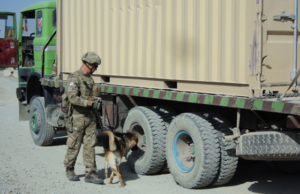
By Debbie Gregory.
The Inspector General’s office has determined that the Army failed their canine soldiers once their work in Afghanistan ended.
The tactical explosive detection dogs (TEDDs) were also let down by the Air Force, as the agent for the Defense Department’s Military Working Dog Program.
Lacking proper oversight of the placements and adoptions of the dogs “occurred without complete adoption suitability records and some families adopted TEDDs with possible aggressive or unsuitable tendencies,” according to the IG’s report.
The IG found cases where a dog that was trained to bite or was aggressive was given to a family with small children. Many of the dogs weren’t neutered or tracked properly.
Army data show that of 232 dogs, only 40 were adopted by their handlers.
An important thing to remember is that not all Military Working Dogs (MWDs) are TEDDs.
In 2010, the Army began developing the TEDD program to support Brigade Combat Teams deployed to Afghanistan to mitigate Improvised Explosive Device attacks and to reduce casualties resulting from Improved Explosive Devices.
The TEDD capability was developed as a nontraditional Military Working Dog program. The Army procured and trained the dogs through an Army contract rather than procuring them through the Air Force’s 341st Training Squadron, the agency authorized by regulation to procure Military Working Dogs for use by DoD components. The Army selected and trained soldiers attached to deploying units as temporary TEDD handlers only for the duration of deployment. The Army ended the TEDD Program in 2014.
Some of the TEDDs were sent to law enforcement agencies, but were never used n a security role. Additionally, an unidentified private company adopted 13 TEDDs, but ended up surrendering them to a kennel, according to the report.
In a 2016 report to Congress, the Air Force noted shortcomings in its policy allowing the dogs’ military handlers to adopt them. Breakdowns in the system for notifying handlers when their former working dogs became available for adoption resulted in missed adoption opportunities.
Congress has recommended “former handlers of MWDs as first priority for MWD adoption,” the report said.
Military Connection salutes and proudly serves veterans and service members in the Army, Navy, Air Force, Marines, Coast Guard, Guard and Reserve, and their families.
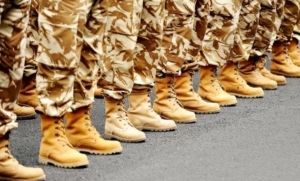
By Debbie Gregory.
President Trump’s ambitious plan to rebuild America’s overstretched military would cost $683 billion more than current spending plans over the next decade, according to a new analysis by the Congressional Budget Office.
The Congressional Budget Office is a federal agency within the legislative branch of the United States government that provides budget and economic information to Congress.
President Trump came into office pledging the largest defense spending spree since the administration of Ronald Reagan — assuring the troops that they would see “beautiful new planes and beautiful new equipment.”
More missile defense systems, an upgraded nuclear arsenal and hundreds of additional fighter aircraft were also on the president’s wish list.
The budget for President Trump’s goals for the military would be more than 20 percent larger than peak spending during the 1980s.
The buildup’s projected 10 percent manpower increase (an additional 237,000 troops), its addition of 20 percent more naval vessels, and its increased purchases of other new weapons, adds up to a 12 percent increase over the Obama administration’s plans for defense spending over the same period.
For the Air Force, rising costs result primarily from existing plans to replace aging weapon systems and increased purchases of the F- 35A to allow the Air Force field five additional fighter squadrons.
The projections were based on administration documents, congressional testimony and the 2018 budget request’s five-year plan. The administration is due to produce a 2019 budget request and its National Defense Strategy, which will likely add more clarity.
Defense Secretary Jim Mattis said in congressional testimony earlier this year the buildup would begin in 2019.
Military Connection salutes and proudly serves veterans and service members in the Army, Navy, Air Force, Marines, Coast Guard, Guard and Reserve, and their families.
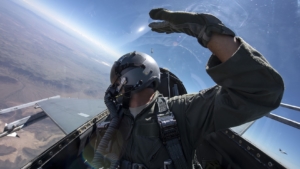
By Debbie Gregory.
Despite the fact that President Trump invoked the National Emergencies Act to address the Air Force pilot shortage, Air Force officials have indicated they have no current plans to act on the authority granted to them by the president’s order to increase pilot numbers.
The Air Force needs roughly 20,000 pilots to accommodate its various needs and fly its wide array of aircraft. Roughly 10 percent of its positions remain unfilled.
While appreciative of the leeway granted by the act which allows the Air Force to voluntarily recall up to 1,000 retired aviators for active duty, the Air Force is responding to the pilot shortage with various incentive programs to keep officers in uniform longer.
Incentives such as promotion opportunities and pay bonuses worth up to $350,000 over a 10-year term may help ease the crisis.
But it doesn’t always come down to dollars and cents. Brig. Gen. Mike Koscheski, the Air Force’s Aircrew Crisis Task Force director said that incentives that focus on work-life balance and quality of life are paramount to retention.
“We’re looking to provide more time for the air crew member to have with their family and some work time at home,” said Koscheski.
But Senate Armed Services Committee Chairman Senator John McCain, a veteran who was a U.S. Navy pilot during Vietnam, disagrees. A critic of how the Air Force has handled the pilot shortage, Sen. McCain feels the problem is actually linked to a desire to fly and the fact pilots feel they’re grounded far too often due to budget cuts.
“You are addressing this issue of pilot shortage from exactly the wrong direction,” said Sen. McCain. “I talk to too many [pilots] all the time. They say, ‘Senator McCain, all I want to do is fly. I want to be in combat.’ That’s what they’re all about…So this whole idea of trying to outbid the airlines on the keeping people in the Air Force is foolish.”
Military Connection salutes and proudly serves veterans and service members in the Army, Navy, Air Force, Marines, Coast Guard, Guard and Reserve, and their families.
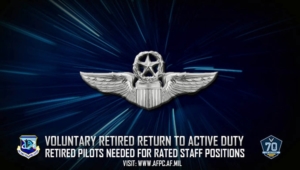
By Debbie Gregory.
Retired pilots- the Air Force wants you…again!
To that end, the service branch has initiated the Voluntary Retired Return to Active Duty Program (VRRAD) for pilots under the age of 60 in the rank of captain, major or lieutenant colonel, who retired within the last five years.
Pilots who held a job in the 11X career field are encouraged to apply before Dec. 31, 2018 to fill 25 flight staff positions for an active-duty tour of one year. Should those positions remain unfilled, the Air Force will extend the program deadline into 2019.
Applicants must be medically qualified for active duty with a flying class II physical; must have served in a rated staff position within the past 10 years; or have been qualified in an Air Force aircraft within five years of application.
The goal is to get experienced pilots to man staff jobs, or serve as instructor pilots to free up younger officers to get more training, and more hours in the air, which is one key to retention.
“We have a number of positions around the Air Force that require the expertise of someone who has been a military pilot, and [we] would like to be able to keep our pilots who are current in the aircraft in the aircraft and try to fill some of these vital flight slots,” said Air Force Secretary Heather Wilson.
Today’s Air Force requires 20,000 pilots to fly fighter jets, transport planes, helicopters and drones. This year, the service reported it was down 1,500 pilots. But the latest figures show the problem is getting worse, with a shortfall of 1,926 pilots.
Former airmen can apply for the program via the myPers website. Those without a myPers account can do so at http://www.afpc.af.mil/myPers/.
Military Connection salutes and proudly serves veterans and service members in the Army, Navy, Air Force, Marines, Coast Guard, Guard and Reserve, and their families.
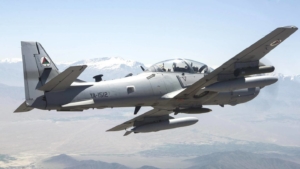
By Debbie Gregory.
In August, for the first time since the end of the Vietnam era, the Air Force conducted a flying experiment with combat aircraft. This nontraditional event was put together in only five months.
The Air Force was interested in assessing the potential of low-cost, commercially developed ground attack aircraft to conduct the kind of combat missions that have composed the vast majority of combat missions in the last 25 years. The light attack experiment is the first large-scale experiment of its type in decades.
During the first week of the experiment, Air Force pilots flew basic surface attack missions in Textron Aviation’s AT-6 Wolverine turboprop, as well as in Sierra Nevada Corp. and Embraer’s A-29 Super Tucano.
Now, the Air Force is preparing to launch Combat Dragon III, a combat demonstration meant to test light-attack aircraft in the field.
“We are preparing as if we’re going,” said Air Force Reserve Col. Mike Pietrucha, who is light-attack adviser to Air Combat Command.
The squadron commander and a detachment of 70 personnel will be drawn from operational squadrons.
The personnel chosen will have a minimum requirement of 1,000 flight hours and combat experience.
“We’re experimenting and innovating, and we’re doing it in new and faster ways,” said Secretary of the Air Force Heather Wilson. “Experiments like these help drive innovation and play a key role in enhancing the lethality of our force.”
Expected to make a final decision about combat-testing by the end of the year, Air Force leaders have already selected some of the previously tested aircraft. Testing criteria includes weapon capability, reliability and maintenance requirements.
“This experiment is about looking at new ways to improve readiness and lethality,” said Chief of Staff of the Air Force Gen. David Goldfein. “Working with industry, and building on the Combat Dragon series of tests, we are determining whether a commercial off-the-shelf aircraft and sensor package can contribute to the coalition fight against violent extremism.”
Military Connection salutes and proudly serves veterans and service members in the Army, Navy, Air Force, Marines, Coast Guard, Guard and Reserve, and their families.
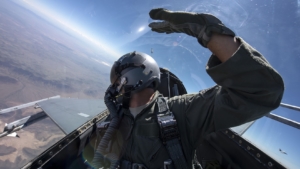
By Debbie Gregory.
The U.S. Military has explored a number of incentives in order to retain their servicemembers, including monetary bonuses. Now the Air Force has come up with a unique enticement for pilots and airmen to stay in uniform.
The Career Intermission Program (CIP) is increasing sabbatical leave from one year to three years.
CIP offers the opportunity for a one-time, temporary transition from active duty to the Individual Ready Reserve for beyween one and three years, while providing a seamless return to pre-CIP active-duty status. Air Force officials are hoping that this offer will be appealing enough to allow the service branch to be more competitive when recruiting new airmen, as well as holding on to current servicemembers.
According to Adriana Bazan, military personnel specialist at the Air Force Personnel Center, this affords an avenue to meet the changing needs of today‘s servicemembers.
“This work-life flexibility initiative will enable the Air Force to retain talent, which reduces cost and adverse impacts on the mission,” said Bazan.
Airmen who participate in the program will receive a monthly stipend equal to two-thirtieths of their basic pay. They also retain full active-duty medical and dental benefits for themselves and their eligible dependents.
Airmen who are eligible for the program must serve two months on active duty for every month of leave taken.
Air Force Secretary Heather Wilson stated earlier this year that the Air Force was short by 1,544 pilots during fiscal year 2016.
There are also financial incentives to recommit, with some pilots eligible for a possible $25,000 per year commitment bonus.
Fighter pilots, who may be able to extend their career for nine additional years, could rack up an astounding $225,000 in retention bonuses.
Military Connection salutes and proudly serves veterans and service members in the Army, Navy, Air Force, Marines, Coast Guard, Guard and Reserve, and their families.
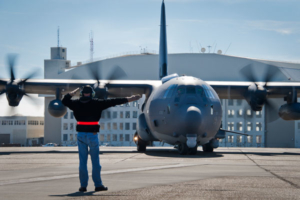
By Debbie Gregory.
The Air Force’s AC-130J Ghostrider is just about ready for combat, although the aircraft won’t actually deploy to a war zone for a couple more years, according to Lt. Gen. Marshall “Brad” Webb, head of Air Force Special Operations Command.
“We are declaring IOC, Initial Operating Capability, this month on the AC-J,” said Lt. Gen Webb. “This is a fully configured gunship.”
He added, “That doesn’t mean anything with respect to putting it in combat — we’re still just shy of two years away from wanting to put those in combat.”
The reason for the delay is that time is needed to train special operators on the new weapon system.
A heavily modified C-130, the AC-130J features fully integrated digital avionics. It also boasts a “Precision Strike Package” that includes a mission management console, robust communications suite, two electro-optical/infrared sensors, advanced fire control equipment, precision guided munitions delivery capability as well as trainable 30mm and 105mm weapons, according to the Air Force. The cannons can be mounted on both sides of the aircraft.
The AC-130J has an overall length of 29.3m, a height of 11.9m and wingspan of 39.7m. It can operate at a maximum altitude of 28,000ft with a payload of 42,000lb. Its maximum take-off weight is 164,000lb. The aircraft can reach a maximum distance of 3,000 miles without refueling, and can fly at a speed of 362k at 22,000ft altitude.
The aircraft can accommodate two pilots, two combat systems officers, and three enlisted gunners. The aircraft is also designed to accommodate the Large Aircraft Infrared Countermeasures system.
The Air Force currently has 10 of the Ghostriders, and plans to buy a total of 37.
Military Connection salutes and proudly serves veterans and service members in the Army, Navy, Air Force, Marines, Coast Guard, Guard and Reserve, and their families.

© 2006-2020 Military Connection, Owned by BL, LLC. All rights reserved